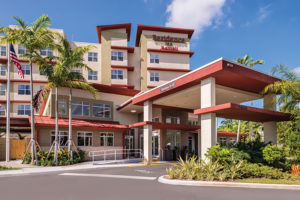NATIONAL REPORT—Since it was created by the Immigration Act of 1990, the EB-5 visa program has helped foreign nationals gain a green card by investing money in the United States. Amid a volatile political environment when it comes to immigration, and criticisms lodged against the program—namely, that it sometimes involves gerrymandering and unscrupulous businesses committing fraud—the EB-5 program, which has also created many jobs and billions in investment in the U.S., has come into the public eye once again. At press time, the program was set to sunset on April 28 and Congress had not yet come to a resolution to extend it—but experts told us they weren’t worried that the program would have a future. But what will that future look like?
John D. Tischler, a partner in Sheppard Mullin’s San Diego office, said that the EB-5 program was “highly likely to be reauthorized” because it “remains extremely popular in Congress. Most senators and representatives have seen EB-5 capital flow into their states or districts and have seen jobs created in their districts from EB-5 projects.”
Todd Soloway, head of Pryor Cashman’s real estate litigation practice, noted that the program has been extended many times by Congress. “Notably, within the past five years, the program has reached a height of popularity. It continues to create hundreds of thousands of jobs for U.S. citizens and is a source of billions of dollars of capital. With the Trump administration’s focus on job creation, the EB-5 program can continue to stimulate the economy,” he said.
Carlos J. Rodríguez Jr., COO of Driftwood Acquisitions & Development, was similarly enthusiastic about the program, but also acknowledged the challenges it has faced. “It is a program that provides great benefits to the economy and has continually been supported and reapproved by Congress. The program can and should be improved, not aborted; how those improvements are made, however, is the source of much controversy in Congress and the reason for the continual reauthorization issue,” he said. “No one in Congress has been able to draft a bill that offers conciliatory terms to all sides involved. Most of our contacts that are tuned in to the happenings in DC believe an extension is likely to happen without changes once again through September because there is lack of consensus on the proposed legislation.”
This includes the Department of Homeland Security’s proposed rules—which were offered under former President Barack Obama’s administration—that would (among other things) increase the amount investors have to spend. Currently, individuals must invest $1 million (or $500,000 in a targeted employment area, or TEA). The new rules would raise that to $1.8 million and $1.35 million, respectively.
Noting the criticisms of the TEAs, Jim Butler, chairman, Global Hospitality Group, Jeffer Mangels Butler & Mitchell LLP, said, “The EB-5 industry is supportive of reforms to improve the industry, protect investors and eliminate bad players. Most problems could be fixed quickly and easily. For example, gerrymandering (the aggregation of disparate census tracts to create a TEA for minimum investment) can be solved by providing a single national standard as to what qualifies as a TEA. TEA determination so far has been left up to each local jurisdiction.”

The EB-5 program helped finance Driftwood’s development of the Residence Inn Miami West/ FL Turnpike.
“As the program becomes more popular, we should anticipate more restrictions being proposed,” Soloway said. “With regard to the proposed rules, we are keeping an eye on the proposed increases to the minimum investment amounts to $1.3 million in TEAs and $1.8 million in other areas; the methodologies by which TEAs are calculated; and if there are any measures taken to diminish the backlog of visas for Chinese nationals.”
For his part, Tischler said, “It is important for new regulations and for renewal legislation to maintain and enhance the attractiveness of the program to investors. EB-5 investors have other choices, including other countries that offer investor visas and other visas available for emigration to the U.S. If the EB-5 investment becomes too expensive, too uncertain or requires too long a wait, such investors will not make EB-5 investments. That will result in a loss of capital and job creation for U.S. companies, with no offsetting benefit to this country.”
And, he added, EB-5 has benefited the country. “The program is now predictably providing $3 billion to $4 billion of foreign capital to the U.S. that is deployed to produce many thousands of jobs. The major advantage of EB-5 capital is that it provides capital to U.S. businesses that is available only at higher costs or on more difficult terms. Some projects would not be feasible without EB-5 capital,” he said.
Soloway agreed. “The pros of the program are evidenced by the numbers. In fiscal year 2016, there were 20,804 EB-5 cases pending at USCIS, with an average approval rate of 90%, which translated into $3.8 billion approved for investment in the U.S.,” he said. “Another advantage of the program is that it is a way for developers in the hotel industry to access less-expensive funding than through banks.”
Butler expanded on the benefits for hospitality. “In our industry, EB-5 capital is used primarily as relatively low-cost mezzanine debt. This has been particularly helpful to hotel developers because traditional mezzanine debt is pricey. For qualified developers and projects, the EB-5 capital can bridge gaps in the capital stack,” he said.
Tischler said there are two major challenges in the current market: intense competition among projects for a limited number of visas, and the susceptibility of EB-5 investments to misappropriation of funds. “All investments face a risk of misappropriation of funds, but EB-5 may be riskier than other investments in this regard given that investors are foreign and no one investor invests enough to be able to personally monitor the invested funds. Recent drafts of reform legislation require independent funds monitoring, and we support a workable independent funds monitoring requirement,” Tischler said.
For his part, Butler added that “instances of fraud are not any greater with EB-5 than any other form of investment,” referencing Bernie Madoff. “Current securities laws and anti-fraud laws are adequate, if enforced. If anything, they could use clarification as to jurisdiction and applicability of existing provisions,” he said.
“We hope the program will be improved and approved on a permanent basis; if that involves more security measures, all the better,” Rodriguez added. “The last thing the program needs is bad press from bad actors both on the project sponsor side (a few big fraud cases come to mind) and from the investor side. If run correctly, the program is a ‘win, win, win’ for the economy, for the projects and for the investors. We believe that any president/politician, let alone a hotelier, should understand the benefits this program brings.”
Chip Rogers, AAHOA president/CEO, expressed similar sentiments. “Welcoming the world’s job creators should be at the center of immigration reform. We believe the EB-5 program, if structured properly, can continue to be a major driver for the American economy. Our nation should always be home for entrepreneurs willing to invest significant capital and create economic opportunities for Americans,” he said.
Rodriguez added that Driftwood knows firsthand the opportunities the U.S. presents to families coming from Latin America, and the benefits foreign families bring far outweigh the initial $500,000 and 10-person job creation. “Being a facilitator in that process, creating lasting relationships with these investors over the long term, adding jobs, value and exciting new hotel venues to our communities is a great joy,” he said. “As for the benefits to the projects, above all else the EB-5 program allows us to bridge the capital stack between our equity and the first mortgage bank loan, which makes hotel development more feasible to us and our investors. We offer attractive equity and debt options to our EB-5 investors and thus it is less about ‘cheap’ capital than it is about reducing our first mortgage necessity while not having to fund 40-50% of the deal ourselves.”
While all were optimistic about the program, Soloway did express some caution. “While we expect the EB-5 program to be extended, securing access to capital might prove to be more difficult in the coming months. It is certainly in the best interest of hotel developers to seek alternative sources of funding so that their projects are not stalled,” he said.
Tischler added that EB-5 remains an attractive form of financing, but there are uncertainties beyond program renewal. “Our clients must consider those uncertainties when they decide whether EB-5 capital is right for them. To the extent that the Department of Homeland Security or Congress can increase certainty and reduce delays associated with project and individual investor approvals, EB-5 capital will be more attractive and more able to serve its intended purposes,” he said.
Still, Butler pointed out that, with uncertainty and potential changes swirling about the program for a while, “hotel developers who have decided to wait and see what happens have lost out and are still waiting. Those who evaluated their project carefully found reliable and consistent EB-5 lenders, and took advantage of the EB-5 opportunity. The process can be evaluated every step of the way.” HB

